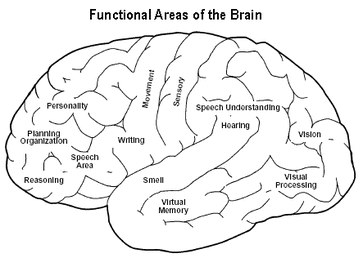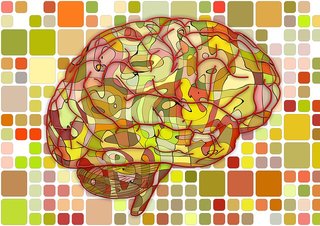What is a learning style?
Learning styles are different approaches or ways of learning. This term speaks of understanding that every student learns differently by a preferred way. For example, a kid who understands a chemistry topic by observation (charts, graphs, diagrams, flow charts or pictures), while other has to learn through experience and physical activity, like doing experiments.
In a review for the Learning Skills Council, Coffield (2003) identified 71 different models of learning style. But, one of the most accepted understandings of learning styles is based on Neuro-Linguistic Programming (NLP): the VAK model.
The VAK model describes learners as Visual, Auditory and Kinesthetic. It was originally devised in the 1920s to assist teaching children with dyslexia. According to VAK model, one or two of our sensory receivers are dominant, suggesting that learners have a natural preference for the way they learn.
- Visual learner prefers to take in information by seeing visual displays and retains information better when it is presented in, for example, pictures, graphs and diagrams.
- Auditory learner prefers to listen and take information in by what they hear, for example, verbal lectures, group discussions and debates.
- Kinesthetic learner prefers to learn by a physical experience. He or she prefers to learn by experimentation.
A variation on the acronym, developed by New Zealand-based teacher Neil D. Fleming (1987), is VARK, or Visual, Auditory, reading/writing, and kinesthetic:
- Reading/Writing learner prefers information displayed as words. He or she enjoys reading widely and write well. He or she is good at taking notes during class and studies best by reading over these notes.
In 1984, David Kolb published his learning styles model and proposed that we all learn from our experience in a cyclical way. People observe something happening and reflect on their observations. This experience and reflection are then incorporated into the theoretical knowledge that the person already possesses, or is supported by reading and training, building up a framework into which to fit their experience. To complete the cycle, people then need to be able to practice the new skills they have learned.
Learning is the process whereby knowledge is created through the transformation of experience. Knowledge results from the combination of grasping experience and transforming it. – David Kolb (1984).
The Kolb´s learning styles are:
- Diverging (feeling and watching - CE/RO).
- Assimilating (watching and thinking - AC/RO).
- Converging (doing and thinking - AC/AE).
- Accommodating (doing and feeling - CE/AE).
Although Kolb's model is widely accepted with substantial empirical support, a 2013 study suggests that the Learning Style Inventory (LSI) still possesses serious weaknesses. According to this, the study concluded: “Implications for future research and guidance for learning and teaching methods are discussed.”
Why does the belief in Learning Styles persevere? Why is the idea so popular?
First, the fact behind the learning styles myth is that different regions of the cortex have different roles in visual, auditory, and sensory processing, and so students should learn differently according to which part of their brain works better. The cerebral cortex plays a key role in memory, attention, perceptual awareness, thought, language and consciousness.
Second, when something is so pervasive it doesn't even occur to people to challenge it. In 2012, a study found that more than 90% of teachers in UK and Netherlands believed that the learning style was true. Besides this, parents like to think that their children are receiving a tailored education by teachers, who has planned their classes according to students’ learning styles.
“In 2012, 94% of free articles on the web start with a positive view of learning styles” - Philip Newton, a professor at Swansea University’s College of Medicine.
Third, if you think that the learning style theory is wrong, you must think that all learners are identical, which is obviously untrue. Learners do differ in many important ways, learning styles just aren't one of them, they differ in their strengths, interests, in what they already know (prior knowledge) and their level of development and brain maturity. Learning differences are also related to genetics, temperament and environment.
Furthermore, many assessments of learning styles were created by for-profit companies, which don’t always make for the most reliable data. The companies sell tests and educational materials that allow teachers to assess the learning styles of their students. It benefits companies to say their system is an accurate teaching method since they make money off every student who takes their test.
That's not to suggest that everything should be taught in the exact same way. The best way to teach something might depend on the nature of the material itself. For example, it would be hard to teach geometry without diagrams or reading and writing without words.
Is there any evidence to support the learning styles concept?
Yes, there is a little, although there’s so much evidence that learners express how they prefer to learn by one sensory modality, few studies have found any validity in using learning styles in education.
Learning Styles may represent the educational equivalent of homeopathy: a medical concept for which no evidence exists, yet in which belief and use persist.
In 2004, Frank Coffield, professor of education at the University of London, led research into the 13 most popular models of learning styles and found there wasn’t sufficient evidence to supply teaching techniques to various learning styles.
Also, Coffield told The Guardian, “Low-cost and easily implemented classroom approaches can certainly cultivate wishfulness amongst educators, especially if they are fun and therefore likely to be well received by students.”
“Although the literature on learning styles is enormous, very few studies have even used an experimental methodology capable of testing the validity of learning styles applied to education” - Harold Pashler (2008), a psychology professor at UC San Diego.
In 2008 the Association of Psychological Science commissioned a group of researchers to examine the research on learning styles. Their report, Learning Styles: Concepts and Evidence, concludes with:
"The contrast between the enormous popularity of the learning-styles approach within education and the lack of credible evidence for its utility, is in our opinion, striking and disturbing. If the classification of students' learning styles has practical utility, it remains to be demonstrated."
In 2012, Dr. Sanne Dekker and her colleagues from the LEARN! Institute at the VU University in Amsterdam, the Netherlands, and Bristol University in the UK evaluated the prevalence of neuromyths among teachers in selected regions in the United Kingdom and the Netherlands. The result was that more than 80% of the teachers surveyed agreed that people learn by a preferred way. This is a widely held myth.
"Claims such that 'some students learn from words, but others from images' are incorrect, as all students learn most effectively through linking images with words. These effects become especially strong when the words and images are made meaningful through accessing prior knowledge. Differences between students in learning are determined strongly by their prior knowledge, by the patterns they can recognize, and not by their learning style" – John Hattie and Gregory Yates (2014), “Visible Learning and the Science of How We Learn”
Paul Howard-Jones, professor of neuroscience and education at Bristol University, spoke at the BNA Festival of Neuroscience and he pointed out that some research actually suggests that children learn better when presented with information in a way that takes them out of their “comfort zone.”
In 2013, Howard-Jones and his colleagues contacted 242 teachers in the UK and Holland, asking them to complete an online survey containing 32 statements about the brain, and to indicate whether each one was true or false. They found that the 82% of teachers believed that “learning styles” exist.
Cedar Riener and Daniel Willingham wrote a brief article where they contend that there is little evidence that learning styles exist and identify four areas of difference that exist between learners: ability, interests, background knowledge and specific learning disabilities; all of them directly influence how learners learn.
Riener and Willingham research show that 90 percent of the learners agreed that “they have their own learning style.” This belief can constrain learners -if a student thinks he or she is a visual learner and the teacher’s not supporting the presentation of material visually, then the student may think he or she can’t learn it.
“Students differ in their abilities, interests, and background knowledge, but not in their learning styles. Students may have preferences about how to learn, but no evidence suggests that catering to those preferences will lead to better learning.” - Riener, C. and Willingham, D. (2010). The myth of learning styles.
Daniel Willingham, a cognitive psychologist at the University of Virginia, contends that there is little evidence that learning styles exist, and little evidence for the claims made about the educational importance of learning styles.
Learners do differ from one another. But many who believe in the myth do not consider the critical differences between styles and abilities.
Learning is the same regardless of how the content is presented to you. Most of what you learn is stored in term of meaning — not in terms of whether you saw, heard, or physically interacted with the information.
Stop labeling students according to their preferred way (visual, auditory and kinesthetic), build their confidence to master subjects or topics according to their abilities, interests and background knowledge.
Also, try to learn as much as you can about each student, and teach each person in ways that they find comfortable and learn effectively.
Teach important materials in several ways, not just one (e.g. through stories, flashcards, diagrams, role play). In this way, you can reach students who learn in different ways.
Drop the term "styles" It will confuse others and it won't help either you or your students.
References
- Kolb D.A. (1984) Experiential Learning experience as a source of learning and development, New Jersey: Prentice Hall
- Paschler, H., McDaniel, M., Rohrer, D. and Bjork, R. (2010) Learning styles: Concepts and evidence. Psychological Science in the Public Interest 9, pp. 105-119.
- Dekker,Sanne, Howard-Jones, Paul (2012). Neuromyths in education: Prevalence and predictors of misconceptions among teachers. Frontiers in psychology 3
- Riener, C. and Willingham, D. (2010). The myth of learning styles. Change, (September/October), 32-35.
- Howard-Jones, Paul (2014) Neuroscience and education: myths and messages. Nature Reviews Neuroscience.
- Willingham, D. T., Hughes, E. M., and Dobolyi, D. G. (2015). The scientific status of learning styles theories. Teach. Psychol.



